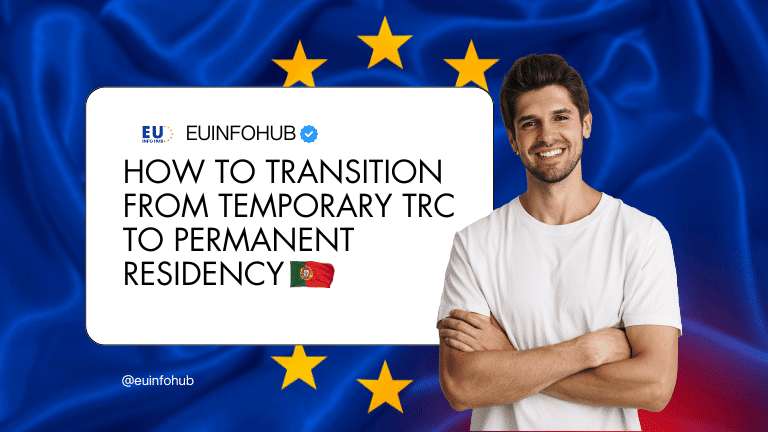Have you missed your deadline for Fall intake due to missed documents? Well, many European institutions allow you to start your degree in January. European universities with a January intake give you the chance to start your studies in the new year instead of waiting until Autumn.
But, you need to be very active because there’s a very small window to complete all the requirements.
In this guide, you’ll find top programs, key deadlines, and tips to make your application shine. So, let’s get into the topic without any delay.
What Are the Benefits of January Intake?
Starting in January comes with perks you might not have considered. To name a few;
Flexible timing
- You can wrap up high school or your gap year without rushing.
- Deadlines often stretch into midyear, so you get more prep time.
- Visa processing can feel less frantic when embassies aren’t overloaded.
Smaller cohorts
January classes tend to be smaller than September groups. That means more face time with professors, extra networking chances, and easier integration. You’ll likely notice a friendlier vibe if you thrive in tight-knit settings.
Smooth progression
Joining in winter keeps you on track with your peers. You’ll follow the same curriculum and graduate on schedule. If you aim to enter the job market at a particular time, a January start won’t delay your timeline.
European Countries with January Intake
Europe offers winter-start programs across regions. Here’s a quick look at where to apply.
Western Europe
- France: HEC Paris, ESSEC Business School
- Netherlands: University of Amsterdam, Erasmus University Rotterdam
- Spain: University of Barcelona, Complutense University of Madrid
Northern Europe
- Ireland: Trinity College Dublin, University College Dublin
- United Kingdom: University of Edinburgh, King’s College London
- Scandinavia: Some Swedish and Finnish schools allow late applications (second round) if spots remain [1]
Central and Eastern Europe
- Germany: Technical University of Munich, Heidelberg University
- Poland: University of Warsaw, Jagiellonian University
- Latvia: University of Latvia, Riga Technical University
Switzerland
- ETH Zurich, University of Zurich
If you’re curious about every Europe check out january intake universities in europe for a broader list.
Notable January intake institutions
Below is a snapshot of standout schools offering January starts across Europe.
| Country | University | Program types | Typical deadline |
|---|---|---|---|
| France | HEC Paris | MBA, MSc | October 2025 |
| Germany | Technical University of Munich | Engineering, MSc | Mid-July 2025[^1] |
| Netherlands | University of Amsterdam | BA, MSc | November 2025 |
| UK | University of Edinburgh | BA, MSc | December 2025 |
| Ireland | Trinity College Dublin | BA, MSc | December 2025 |
| Poland | University of Warsaw | BA, MSc | August 2025 |
| Latvia | Riga Technical University | Engineering, MSc | June 2025[^1] |
| Switzerland | ETH Zurich | Sciences, Engineering | November 2025 |
German public universities commonly accept applications until mid-July, while Baltic schools allow submissions until June.
Now that you know the countries and institutions that offer January intake, scroll down to find the key application deadlines.
Key Application Deadlines
Deadlines vary by country, institution, and program. Here’s what you need to know.
Public universities
Most public institutions set fixed cut-offs for January admissions. For example, Germany typically closes applications by mid-July. In Austria and Poland, you may apply right up until the semester start in some programs.
Business schools
Top-ranked business programs often have rolling admissions. You can apply as late as one month before your intended start date, provided seats remain. This flexibility helps if you’re finalizing test scores or recommendation letters.
For a complete rundown of entry requirements, visit the January Intake Universities in Europe 2026 requirements.
What Are the Admission Requirements?
Admission criteria differ, but most January intake programs ask for similar credentials.
Academic credentials
- A strong high school diploma (undergraduate) or bachelor’s degree (postgraduate)
- Specific prerequisites for science and engineering courses
- Transcripts are officially translated if not in English or the local language
Language proficiency
IELTS and TOEFL
- IELTS Academic and TOEFL iBT are widely accepted across Europe.
- Minimum requirement: often CEFR level B2 or higher [2].
- Test results must be valid when you submit your application (typically two years).
Alternatives to IELTS
- Duolingo English Test (scores 105–130)
- Medium of Instruction letter (MOI) if your prior education was in English
- Some schools waive tests if you studied in an English-taught program
Visa requirements
- Start visa planning at least six months before departure.
- Processing can take 4 to 12 weeks depending on the country.
- Prepare financial proof, health insurance, and acceptance letter.
Funding and scholarships options
If you’re worried about funding and scholarship options for January intake, fret not. There are multiple scholarship options available.
University scholarships
Many institutions offer merit-based awards for winter starts. Check each program page early, as deadlines usually mirror application cut-offs.
Government funding
- Erasmus+ grants for EU citizens
- National scholarships (for example, German DAAD scholarships)
External grants
- Private foundations
- Country-specific bursaries (like Ireland’s Government of Ireland International Scholarships)
January vs September intake
Here is a one-on-one comparison of January and September intake so you can opt one.
| Factor | January intake | September intake |
|---|---|---|
| Competition level | Often less intense | Highly competitive |
| Cohort size | Smaller groups | Larger, more diverse |
| Orientation events | Fewer introductory activities | Comprehensive welcome program |
| Weather | Winter environment | Autumn scenery |
| Course availability | May be limited in some programs | Full program catalog |
Which fits you best depends on your goals, schedule, and personal style.
Key Steps For Application Preparation
Here’s a step-by-step checklist to keep your January intake application on track.
1. Research programs
- Narrow down countries and universities
- Note program requirements and deadlines
2. Gather documents
- Transcripts, degree certificates, English test scores
- Passport copy, CV, motivation letter
3. Craft a strong narrative
- Highlight relevant projects, internships, or work experience
- Tailor each essay to the university’s values
4. Request recommendations
- Ask professors or employers at least six weeks in advance
- Provide clear guidance on what you wish them to focus on
5. Submit your application
- Double-check all fields and attachments
- Pay attention to application fees or waivers
6. Follow up
- Confirm receipt of your materials
- Track your portal for offers or interview invitations
Are you curious about programs that start even later? Explore February intake universities in Europe 2026.
What’s Next?
That’s all you need to know about January intake in European universities. Here are a few final pointers:
- Start early even if deadlines are not anytime soon. Collecting documents takes time.
- Stay organized to track each application’s status.
- Join student forums or alumni groups for insider tips.
- Consider a September start if you miss a January deadline.
With these insights, you’re set to apply to European winter programs with confidence. If you need further guidance, head to EU Info Hub to get detailed guides.
















5 thoughts on “European Universities with January Intake: Your Next Adventure”